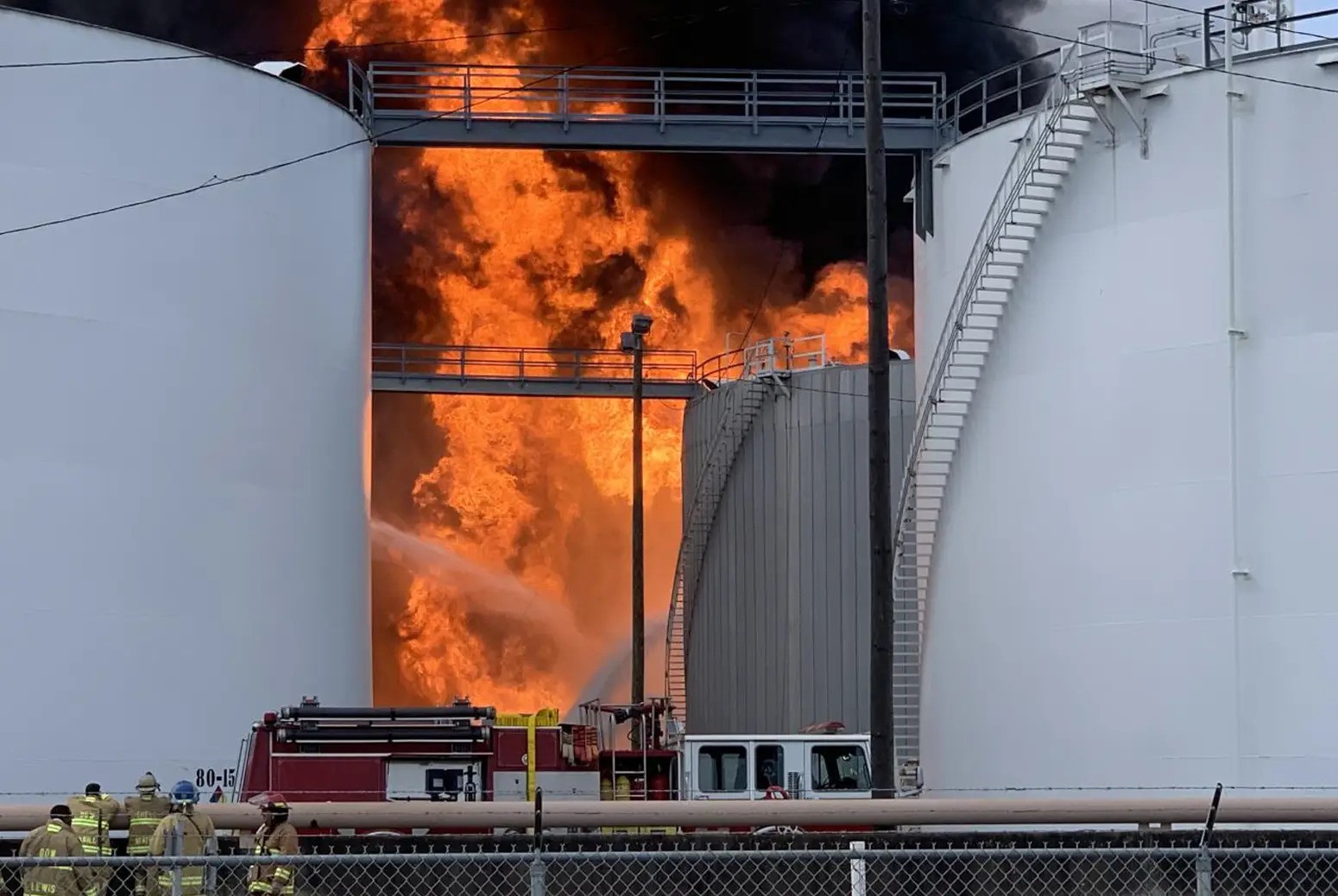Steel Tank Protective Coatings
Steel Tanks Protective Coatings
Written by: Baril Coatings USA
Posted: August 6, 2024
Safeguarding Your Assets from the Silent Threat
In 2019, a massive steel storage tank at a chemical plant in Texas suddenly ruptured, releasing thousands of gallons of toxic chemicals into the surrounding area. The incident led to the evacuation of nearby residents and caused significant environmental damage. Subsequent investigation revealed that the root cause of this catastrophic failure was severe corrosion of the tank's base, which had gradually weakened the structure over time.

This incident serves as a stark reminder of the critical importance of protective coatings for steel tanks. While steel tanks are ubiquitous in various industries due to their strength and versatility, they are not invincible. The silent but relentless force of corrosion poses a constant threat to these vital assets, potentially leading to leaks, contamination, or even catastrophic failures like the one described above.
In this article, we'll explore the world of steel tanks protective coatings, discussing their importance, types, and the latest advancements in the field. As we've seen with corrosion in general, the cost of neglecting proper protection for steel tanks can be astronomical – not just in terms of money, but also in environmental impact and human safety.
The Vulnerability of Steel Tanks
Steel tanks are workhorses in many industries, including oil and gas, chemical processing, water treatment, and food and beverage production. They store everything from crude oil and industrial chemicals to drinking water and liquid foods. However, like all steel structures, these tanks are susceptible to corrosion.
Corrosion in steel tanks can occur both internally and externally:
- Internal corrosion is caused by the contents of the tank, which may be acidic, alkaline, or otherwise corrosive.
- External corrosion is typically due to environmental factors such as moisture, salt air, or industrial pollutants.
The corrosion process in steel tanks follows the same principles we discussed in our previous article on the cost of corrosion. It's an electrochemical reaction that requires an anode (the corroding metal), a cathode, an electrical path, and an electrolyte. In the case of steel tanks, the tank wall itself can serve as both the anode and cathode, while the stored liquid or environmental moisture acts as the electrolyte.
The Importance of Protective Coatings
This is where protective coatings come into play. A well-designed and properly applied coating system can effectively interrupt the corrosion process by:
- Isolating the steel from the corrosive environment
- Providing a barrier against moisture and chemicals
- Incorporating corrosion-inhibiting pigments
Moreover, protective coatings offer benefits beyond corrosion prevention:
- Extended asset life
- Improved safety
- Enhanced efficiency
- Aesthetic appeal
Types of Protective Coatings for Steel Tanks
The world of protective coatings is vast and complex, with different solutions suited to different environments and contents. Here are some of the most common types used for steel tanks:
- Epoxy Coatings
- Polyurethane Coatings
- Zinc-Rich Primers
- Glass-Flake Reinforced Polyester Coatings
- Fluoropolymer Coatings
Latest Advancements in Steel Tank Coatings
The field of protective coatings is continuously evolving, with new technologies emerging to meet increasingly demanding requirements. Some recent advancements include:
- Smart Coatings
- Nanocoatings
- Bio-Based Coatings
- Single-Coat Systems
The Importance of Proper Application
Even the most advanced coating won't perform well if it's not applied correctly. Proper surface preparation is crucial – the steel surface must be clean, dry, and properly profiled to ensure good adhesion. The coating must then be applied according to the manufacturer's specifications, with careful attention to factors like temperature, humidity, and layer thickness.
Regular inspection and maintenance are also key to ensuring the long-term performance of the coating system. Small damages should be repaired promptly to prevent localized corrosion from spreading.
Conclusion
As we've seen, protective coatings play a crucial role in safeguarding steel tanks from the relentless threat of corrosion. By investing in high-quality coatings and ensuring proper application and maintenance, industries can significantly reduce the risk of costly failures, environmental damage, and safety hazards.
At Baril Coatings USA, we understand the critical importance of protecting your steel tanks. Our advanced coating systems are designed to provide superior protection against corrosion, chemical attack, and environmental stressors. We work closely with our clients to understand their specific needs and provide tailored solutions that offer long-lasting protection and peace of mind.
Don't let your steel tanks fall victim to the silent threat of corrosion. Contact us today to learn how our cutting-edge protective coatings can safeguard your assets and contribute to a safer, more efficient operation.